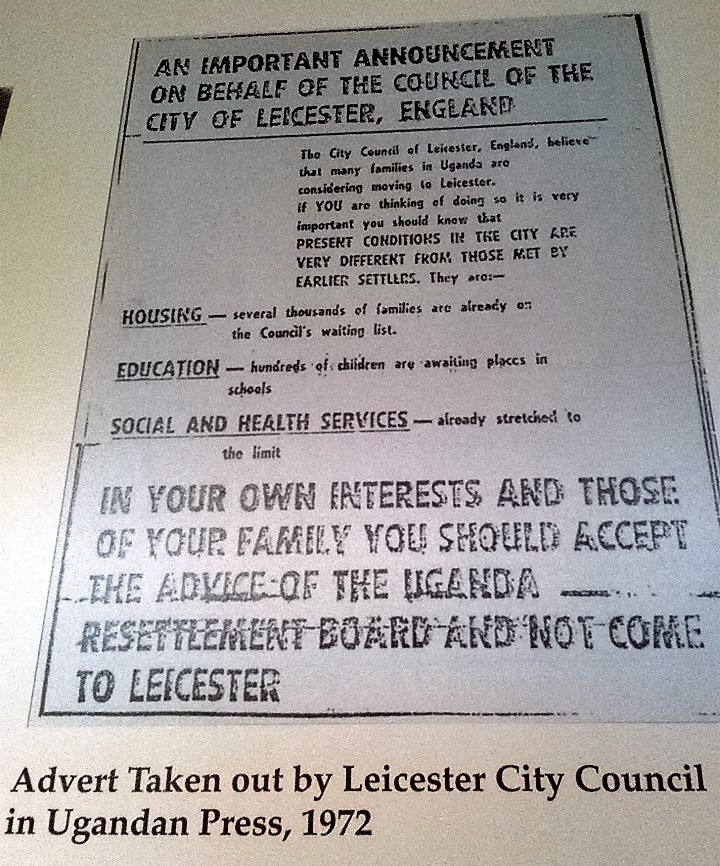why did ugandan asians settle in leicester?

Heritage Practitioner Madeleine Coburn worked with participants to research immigration to Leicester and the causes of the Ugandan exodus.
Since World War II Leicester has had large scale immigration from across the world. Many Polish ex servicemen were prevented from returning to their homeland by the communist regime – and they established a small community in Leicester.
Economic migrants from Ireland came after WW2. Immigrants from the Indian sub continent started to come here in the 1960s – their numbers were boosted by Asians from Kenya and Uganda in the early 1970s.

In 1972, President Idi Amin announced that the entire Ugandan Asian community had 90 days to leave the country. Shortly after that Leicester City Council launched a campaign to dissuade Ugandan Asians from migrating to the city but the adverts did not have their intended effect.
Instead they made migrants MORE aware of the possibility of settling in Leicester !
About 5000 to 6000 (nearly a quarter of initial Ugandan refugees) then settled in Leicester –
by the end of the 1970s another quarter of the Ugandan refugees had made their way to Leicester.
Officially, the adverts were taken out for fear that increased population in Leicester would place pressure on city services and at least one person who was a councillor at the time says he believes they were placed for racist reasons. The initial advertisement was widely condemned, and taken as a marker of anti-Asian sentiment in Britain as a whole. However, attitudes that led to the initial advertisement changed significantly over decades. This is partly because the migrants included the owners of many of “Uganda’s most successful businesses” who brought their expertise here.
Forty years later, Leicester’s City Mayor Sir Peter Soulsby said he regretted the action then.
Why did Ugandan Asians move to Leicester ?
In the 1990s, a group of Dutch citizens of Somali origin settled in the city. Since the 2004 enlargement of the European Union a significant number of East European migrants have settled in the city. While some wards in the northeast of the city are more than 70% South Asian, wards in the west and south are all over 70% white. The Commission for Racial Equality (CRE) had estimated that by 2011 Leicester would have approximately a 50% ethnic minority population, making it the first city in Britain not to have an indigenous white British majority. This prediction was based on the growth of ethnic minority populations between 1991 (Census 1991 28% ethnic minority) and 2001 (Census 2001 – 36% ethnic minority).
However Professor Ludi Simpson at the University of Manchester School of Social Sciences said in September 2007 that the CRE had “made unsubstantiated claims and ignored government statistics” and that Leicester’s immigrant and minority communities disperse to other places.
The Leicester Multicultural Advisory Group is a forum, set up in 2001 by the editor of the Leicester Mercury, to co-ordinate community relations with members representing the council, police, schools, community and faith groups, and the media.